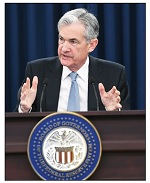By Pam Martens and Russ Martens: June 18, 2020 ~
There is fresh evidence that Citigroup, the mega Wall Street bank that was insolvent but still illegally propped up by the Fed during the last financial crisis (to the tune of $2.5 trillion cumulatively in secret loans for two and one-half years) is back to drinking at the Fed’s trough.
The Fed has set up a program called the Paycheck Protection Program Liquidity Facility (PPPLF). That Fed program is reimbursing small banks for the small business loans that they made under the Paycheck Protection Program which was established by Congress in the CARES Act and being overseen by the Small Business Administration (SBA). According to the Fed, the idea is to reimburse these banks around the country for the PPP loans so that they can make fresh loans to other struggling consumers and businesses. The banks simply post the PPP loans they have made as collateral and the Fed reimburses them. As of last Wednesday, the Fed had reimbursed $57 billion thus far. The SBA has guaranteed the loans against default so the banks are not at risk if they choose to keep the loans on their books.
As of last Wednesday, not one mega Wall Street bank other than Citigroup had taken any of this Fed money. There was no JPMorgan Chase, no Wells Fargo, no Bank of America, no Morgan Stanley, no Goldman Sachs Bank USA on the Fed’s list of reimbursements. The name of Citigroup’s commercial bank, Citibank, however, appeared 34 times. The tally of Citibank’s reimbursements on PPP loans from the Fed totaled $3.077 billion. That fact doesn’t square with the narrative from Fed Chairman Jerome Powell about the condition of these mega banks on Wall Street.
Powell has had two consistent messages at his press conferences and testimony before Congress: those messages are that the mega banks that the Fed supervises went into the coronavirus crisis “well capitalized” and that has made them “a source of strength” in the crisis. If this turns out to be a lie, Powell will be humiliated in Congressional hearings in a manner similar to the feckless former Fed Chairman Alan Greenspan. The Fed would then, necessarily, be stripped of its supervisory role over Wall Street banks for allowing two unprecedented banking collapses in a period of 12 years. Thus, it’s essential to Powell to deal decisively with any facts that get in the way of his narrative.
Yesterday, Powell testified at a House Financial Services Committee virtual hearing. He was asked multiple times about the dangers of Collateralized Loan Obligations (CLOs) to the big banks. That danger has been raised in recent days in an attention-grabbling headline at The Atlantic, “The Looming Bank Collapse.” The article was penned by law professor Frank Partnoy, who likely has a better grasp of these matters than Powell since he was previously a fixed income derivatives specialist at Morgan Stanley and CS First Boston.
Congressman Roger Williams, Republican from Texas, was one of the Committee members who wanted to know more about this threat. Williams cited the article’s title and subhead which read, “The U.S. financial system could be on the cusp of calamity. This time, we might not be able to save it.” Williams told Powell that the author was comparing the current risk of CLOs to the Mortgage-Backed Securities that crashed the financial system in 2008. Williams then asked Powell: “Do you think that the threat of CLOs is properly accounted for and can you discuss how the Fed has been monitoring this risk.” Powell responded as follows:
Powell: “So, I don’t think that that’s an appropriate comparison. I really don’t. This is not the same as mortgage-backed securities. In that situation back 10, 12 years ago, there was almost total lack of transparency to what the banks held and how sensitive was it to risk and things like that. That’s not the case with the CLOs. CLOs — we have really good information. To the extent they’re on bank balance sheets we include them on stress tests; we stress them under very stressful situations like the current situation and we know what the losses would be coming out of that. So it’s a very different situation….”
Actually, it doesn’t sound like a very different situation at all. Why is the Fed only looking at what’s on the balance sheet? It was federal regulators’ failure to look at the $1 trillion in toxic exposure that Citigroup held off its balance sheet that allowed the bank to blow itself up and become a penny stock in 2009, despite $45 billion in equity infusions from the taxpayer and all those secret loans from the Fed. Other mega Wall Street banks were similarly hiding dark secrets off their balance sheets.
Powell’s answer actually makes Partnoy’s argument stronger. Wall Street On Parade reported in April that Three of the Biggest Banks on Wall Street Have $7.4 Trillion In Off-Balance Sheet Exposures. Why isn’t the Fed putting those risks through its stress tests? Wall Street On Parade has also reported on how another federal agency has warned that the Fed is measuring risk all wrong with its stress tests when it comes to derivatives.
In his article, Partnoy writes this: “The Bank for International Settlements estimates that, across the globe, banks held at least $250 billion worth of CLOs at the end of 2018. Last July, one month after Powell declared in a press conference that ‘the risk isn’t in the banks,’ two economists from the Federal Reserve reported that U.S. depository institutions and their holding companies owned more than $110 billion worth of CLOs issued out of the Cayman Islands alone. A more complete picture is hard to come by, in part because banks have been inconsistent about reporting their CLO holdings. The Financial Stability Board, which monitors the global financial system, warned in December that 14 percent of CLOs—more than $100 billion worth—are unaccounted for.”


